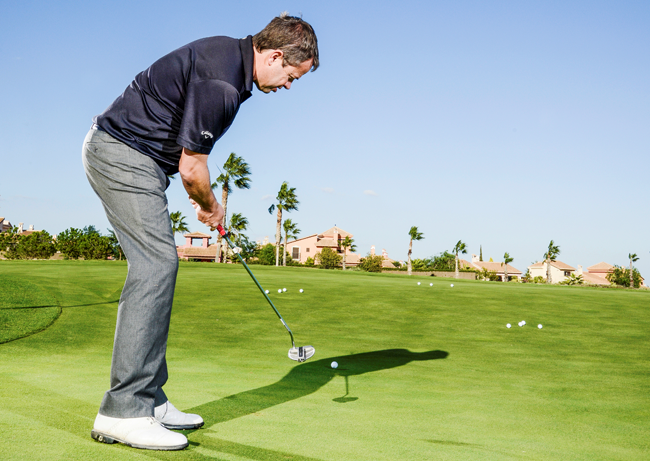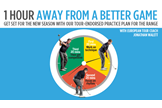One hour away from a better game
Last updated:
Jonathan Wallett is a European Tour coach and director of the Elite Coaching Golf Academy.Whatever your handicap, everyone thinks more practice is the key to success. However, as a golf coach for more than 25 years, I’d say that, of those who practise regularly, 70 per cent do so in a way that hurts their game, and 20 per cent in a way that neither hurts or helps. That leaves just 10 per cent who actually practise in a way that helps them. And this isn’t just amateurs. When I started working with David Howell (above) in 2011, he told me he felt more confused and less confident after a practice session. But whatever your ability, focused practice is the foundation to lower scores, handicap improvement and golfing success. Focus on the objectives Work in thirds |
 |
 |
|
The most common mistake I see in practice is golfers spending 100 per cent of their time attempting to make the swing and technique perfect. They hit every ball thinking about technique and, by the end of the session, have more swing thoughts than they started with. Avoid this trap by making sure no more than one third of it is spent on technique. The focus here is on building a technical skill. It’s fine to use training aids (to help you set up correctly, for example) but use one club and focus on one target. This removes any variables and places the emphasis solely on the technical side of your game. Set up for the hour Use the same club |
 |
 |
|
The focus in this middle third shifts from technique towards establishing motion, feel and rhythm. Developing these skills is vital if you want to feel comfortable hitting a range of distances and shot types on the course. The key to this section is making every shot different, as if you were on the course. Do this by trying to shape different shots (fade, draw, low and high). I see too many people ‘ball beating’ on the range, trying to develop their game simply by hitting ball after ball. This is misguided as beating balls bears little relevance to hitting the same shot on the course where there is no chance to replay it. On the putting green Seek out variety to improve your tempo |
 |
 |
|
Put yourself under pressure in the final third of your session by introducing a ‘win-lose’ element. This last section creates a bridge from your practice to your play as it helps you transfer your range work to hitting good shots down the stretch, whether that is in a club medal or when you’re heading for your best score. Extensive testing has shown that practising in pressurised situations is the most effective way of inoculating yourself against the negative effects of pressure. Use your pre-shot routine just as you would on the course and have no more than one swing thought. Set yourself a target On the putting green |

